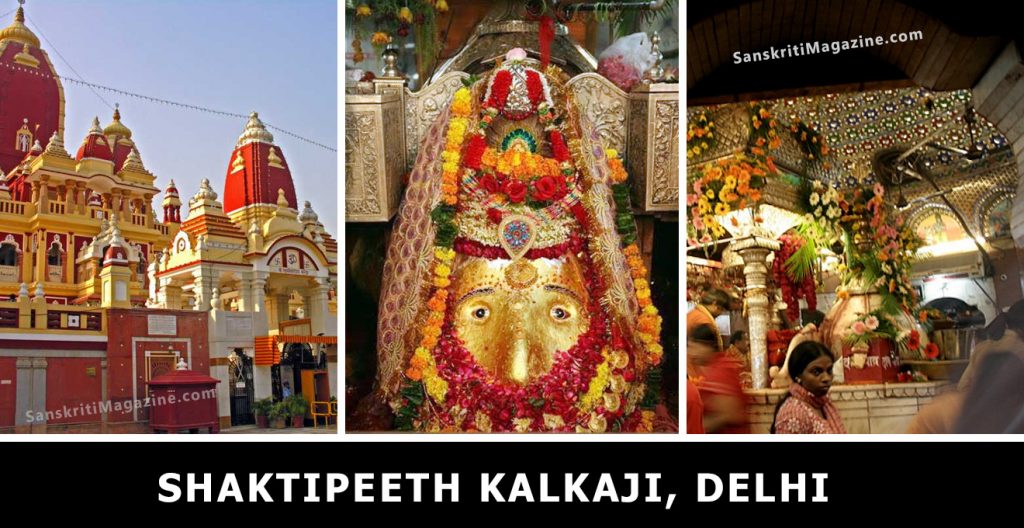~ by Pratha Sharma
Hindu Itihaas states that the body parts of Goddess Sati fell on the Earth in 51 places as Lord Vishnu cut her body by the Sudarshana chakra when Lord Shiva was traversing the universe with her body placed on his shoulder.
So is said that the 51 places are the Siddhapeeths or the Devi temples.
The ancient history of the Kalkaji temple of Delhi is surrounded by mystery. Although people came up with various theories one being that there were two demons who were slayed by Goddess Durga at this place, the fact remains that the history of the temple remains obscure and relatively unknown. This temple is said to exist since Satyayuga or the time mentioned in texts as the beginning of creation.
However, since the original recent temple was broken by the Mughal emperor Aurangzeb, the temple’s history also remained obscure since various evidences relating to the real truth were razed to the ground.
The prime characteristics of a Goddess Sati Shaktipeeth is the existence of a goddess ‘Pinda’ that were formed at the time the body part fell on the ground.
The most important association that the ‘Shakti pinda’ has is with the shivlinga that exists at each and every Shaktipeeth temple.
This happened due to the decision that Lord Shiva had taken not to leave Sati’s body and hence he remained himself in the form of a linga with every panda of Sati. In all such temples, the shivlinga cannot be taken out of the Earth. Folklore and ancient scriptures state that the shivlinga extends towards “Patala” or the centre of the earth.
Such was evident at a time when the slave dynasty ruled Delhi and an order was passed to remove the shivlinga from it’s present place. However hard did they try, the shivlinga did not budge. It is said that the then muslim saint Hazrat Nizamuddin Auliya was called there and when he informed the emperor that the shivlinga cannot be moved, that finally the emperor found out another way to make a passageway.
Also, each Shaktippeth temple is associated with a Bhairav Nath Temple or a ‘Kshetrapal’. The means it is Bhairav who looks after that particular area of the Shaktipeeth. Lord Shiva had himself appointed a Bhairav or his Gana at each of the Sati temples in order to protect them from all evil influences.
So is also the case with the Kalkaji temple with the Kshetrapal Bhairav temple being a few hundred metres away.
Most importantly, all Sati temples are located on a mountainous location. The Kalkaji temple is also located at the Suryakoot mount in the Aravalli range.
However the time when Mughal emperor Aurangzeb gave orders to demolish the temple the major evidences to the real history of the temple were destroyed. And the time after about 80 years when the Marathas reconstructed the temple, the pujaris happened to attain the status of the owners in due course of time.
In the process, the offerings to the goddess in terms of gold, silver and money are not utilized for the upkeep or the maintenance of the temple. This is primarily because there is no temple trust at present, no strong room to safeguard the offerings. There is a great need and scope for the temple cleanliness, dharamshalas, gardens, civic amenities, old age home and women shelters.
The facts that prove the Kalkaji temple as a Sati Shaktipeeth shall eliminate all ownership issues, and the formation of a temple trust shall bring back the glory of the temple that all the rich Hindu temple trusts possess.










